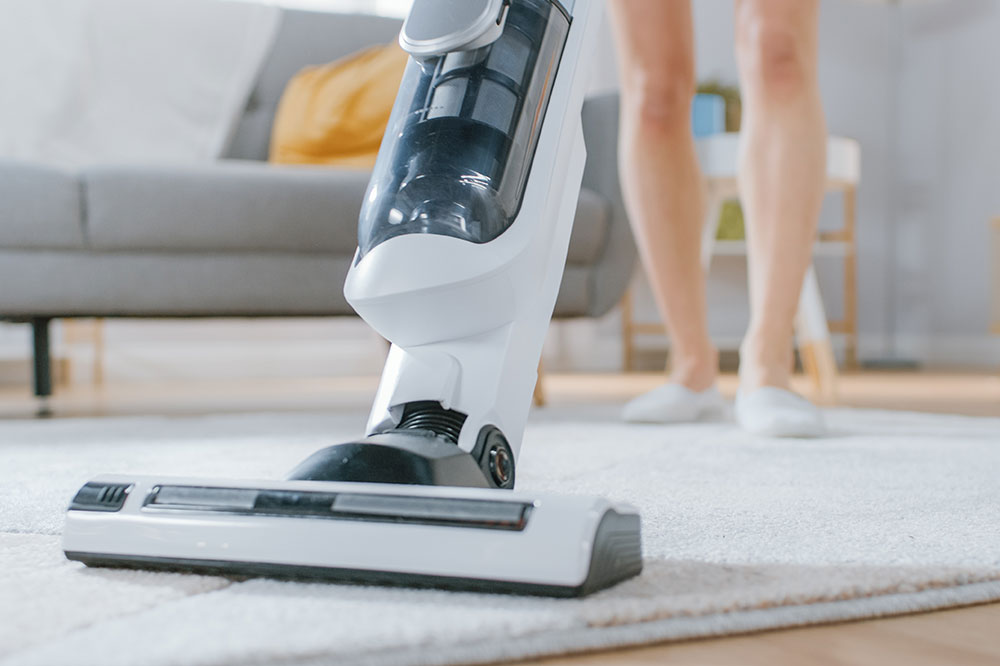5 mistakes to avoid for better vacuuming

When buying your vacuum cleaner, you probably imagined and assumed that your home would be sparkling clean, just as in the commercials. However, reality may have been a disappointment. You may not have been able to use the appliance to its fullest potential or might be making some mistakes while using it. To ensure you get the best for your buck, here are five common mistakes to avoid while using a vacuum cleaner:
Using the vacuum cleaner scarcely
Your vacuum cleaner can clean the tiniest speck of dirt, but it cannot prevent new dust from settling in. If cleaning is a weekend task for you, or you do it only when you have time, you may not be doing it right. Vacuuming your floors daily is essential as the dust and debris accumulating in one day can be quite high. If you cannot vacuum daily, you can sweep the floors instead. This will remove dust and debris like scraps of paper or hair that may accumulate around the house, under the carpet, furniture, and behind doors. Sweeping the floors daily, vacuuming the floor three to four times a week, and vacuuming the complete house once a week can keep your house sparkling clean.
Dusting after you complete vacuuming
Many individuals dust the house after vacuuming. The dust from the ceiling may settle on the desks, tables, and floors. While family members walk around the house, they may leave footprints or streaks on the floor. The right order of cleaning is to dust the furniture, desks, tables, windows, and doors first. The dust is likely to settle in 10 minutes. Wait for some time and run the vacuum on the floors so that it can remove every bit of dust and grime. Vacuuming right after dusting can unsettle the dust and send it back to higher surfaces.
Vacuuming in a hurry
Vacuum cleaners are efficient machines, provided you use them right away. You need to run the vacuum up and down more than once to remove the dust from it. It is particularly important to do this on carpets, under furniture, near doors and windows and in other high-footfall areas, where the dust is likely to be more. Running the vacuum only once or doing it quickly will not remove the dust, and you might end up with shoddy results. Take the time and vacuum slowly and steadily for the best results. When you vacuum in a hurry, you could miss crucial spots where debris tends to gather. For example, a hurried cleaning may not remove dust mites, pet dander, or fur that could be caught up in your upholstery, curtain, bedding or under the carpet.
Not doing the right prep work
Once you decide to vacuum, do you plug the machine and start immediately? If yes, then that is a mistake that you should avoid. It takes a few minutes, but you must do some prep work before vacuuming. The prep work allows you to finish cleaning at a stretch without frequent disruptions.
Know your vacuum attachments well and their purpose of getting the best result
Clear the space by picking up large pieces of debris in the space you want to clean.
Plug in the vacuum and start from the opposite end of the room. By doing this, you will finish near the socket and not have to tread on the cleaned floor to remove the plug.
Pick the right power setting based on the surface you are cleaning.
Always clean from top to bottom and choose the attachments and brushes accordingly.
The best way to vacuum is in the shape of a W. First, vacuum away from you in a straight line. Pull the vacuum back towards you at an angle, creating a V. Repeat the process so that it looks like a W or a chain of Vs.
Not knowing what should not be vacuumed
A vacuum cleaner commercial or salesperson may promise that the vacuum can clean anything and any surface. If you have read the manual, you may know that the appliance has limitations and cannot be used for some objects and surfaces. These products could clog the pipes, damage the dust bag, break the plastic in the machine, aid in mold and mildew inside the vacuum, or cause a scratch in the insides. The things and objects that should not be vacuumed are:
Glass pieces
Fine dust like construction residue
Pet poop
Liquids
Fireplace ash
Makeup
Coins
Small clips and other sharp objects
Used coffee grounds
Garden and plant debris
Electrical wires and cords
Soil
Hair clumps (strands of hair are safe)
Shredded paper.
Tips for maintaining a vacuum cleaner
Clean the appliance frequently to extract optimum performance and ensure that it is durable and gives you good value for money. Some useful tips for maintaining your vacuum cleaner in good condition are:
Clean the vent covers
Keep the filters clean
Remove hair, string, and yarn from the roller brushes after every cleaning
Replace the belt annually
Do not forget to replace the dust bag when it is about 80% full
Wipe the outsides with a mild detergent and cloth
Monitor the performance closely to foresee problems
Wipe or wash the brushes and dry them well before reuse